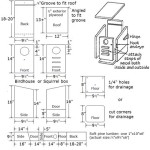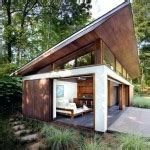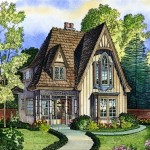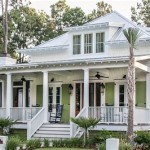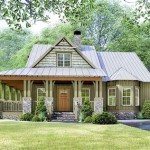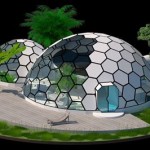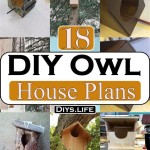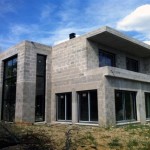Bluebird House Plans Free refer to detailed instructions and specifications for constructing a suitable nesting site for bluebirds, a species of small birds renowned for their distinctive blue plumage. These plans provide a comprehensive guide to building a bluebird house, enabling individuals and organizations to create a safe haven for these charming creatures.
Bluebird houses are designed to provide a secure and inviting environment for bluebirds to nest and raise their young. They offer a protected space away from predators, weather elements, and other disturbances. By installing bluebird houses in suitable locations, such as open areas with scattered trees or shrubs, individuals can contribute to the conservation and well-being of these beloved birds.
In the following sections, we delve into the specifics of bluebird house plans, providing detailed instructions on materials, dimensions, and construction techniques. We explore different types of bluebird houses, their advantages, and best practices for their placement and maintenance. Whether you’re an experienced builder or a novice enthusiast, this article aims to empower you with the knowledge and resources necessary to build a welcoming and functional bluebird house.
When constructing a bluebird house, it is essential to consider several key factors to ensure its effectiveness and suitability for bluebirds.
- Proper dimensions
- Appropriate entrance hole
- Predator guards
- Ventilation
- Drainage
- Durable materials
- Unobstructed view
- Mounting height
- Regular maintenance
By adhering to these guidelines and following best practices, you can create a welcoming and functional bluebird house that will provide a safe haven for these beautiful birds.
Proper dimensions
The proper dimensions of a bluebird house are crucial for ensuring the comfort and safety of its avian occupants. The internal space should be large enough to accommodate a nesting pair and their young, while also providing adequate ventilation to prevent overheating. The entrance hole should be the appropriate size to allow bluebirds to enter and exit easily, while deterring larger birds and predators.
- Floor space: The floor of the bluebird house should measure approximately 5 inches by 5 inches (12.7 cm by 12.7 cm). This provides enough room for a nesting pair and their young, while still being small enough to retain heat.
- Height: The height of the bluebird house should be between 6 inches and 8 inches (15.2 cm and 20.3 cm). This height allows the birds to stand upright inside the house and provides enough space for the nest.
- Entrance hole: The entrance hole should be 1.5 inches (3.8 cm) in diameter. This size is large enough for bluebirds to enter and exit easily, while being small enough to deter larger birds and predators.
- Depth: The depth of the bluebird house should be between 6 inches and 8 inches (15.2 cm and 20.3 cm). This depth provides enough space for the nest and allows the birds to move around comfortably.
By adhering to these dimensions, you can create a bluebird house that is both comfortable and safe for its feathered inhabitants.
Appropriate entrance hole
The entrance hole of a bluebird house is a critical design element that directly impacts the safety and nesting success of its avian occupants. It must be carefully sized and positioned to allow bluebirds easy access while deterring larger birds and predators from entering. Here are key considerations for creating an appropriate entrance hole:
Size: The diameter of the entrance hole should be approximately 1.5 inches (3.8 cm). This size allows bluebirds to enter and exit the house easily, while being small enough to prevent larger birds, such as house sparrows and starlings, from entering. A smaller entrance hole can also help deter predators, such as snakes and cats, from reaching the nest.
Shape: The entrance hole should be round or oval in shape. Avoid creating a square or rectangular hole, as these shapes are more easily enlarged by predators. A round or oval hole is more difficult for predators to grip and widen.
Location: The entrance hole should be placed near the top of the front panel of the bluebird house, approximately 6 inches (15.2 cm) above the floor. This placement allows bluebirds to easily enter and exit the house, while also providing some protection from predators.
Predator guards: To further deter predators, consider adding a predator guard to the entrance hole. A predator guard is a small, L-shaped piece of metal or plastic that extends outward from the entrance hole. This guard makes it more difficult for predators to reach the nest and attack the eggs or chicks.
By carefully considering the size, shape, location, and predator guards of the entrance hole, you can create a safe and inviting nesting site for bluebirds.
Predator guards
Predator guards are an important addition to bluebird houses, as they help to deter predators from reaching the nest and harming the eggs or chicks. There are several different types of predator guards available, each with its own advantages and disadvantages.
- Baffles: Baffles are flat pieces of metal or plastic that are attached to the outside of the bluebird house, below the entrance hole. Baffles prevent predators from climbing up the side of the house and reaching the entrance hole.
- Cones: Cones are cone-shaped devices that are placed over the entrance hole. Cones prevent predators from reaching the entrance hole by creating a physical barrier.
- Perches: Perches are small, horizontal rods that are placed near the entrance hole. Perches allow bluebirds to land and perch before entering the house, while deterring predators from landing on the perch and reaching the entrance hole.
- Predator guards with multiple features: Some predator guards combine multiple features, such as baffles, cones, and perches. These guards offer the most comprehensive protection against predators.
When choosing a predator guard, it is important to consider the type of predators that are common in your area. If you are concerned about snakes, for example, you may want to choose a predator guard that extends all the way to the ground. If you are concerned about cats, you may want to choose a predator guard with a perch, as this will make it more difficult for cats to reach the entrance hole.
Predator guards are an effective way to protect bluebirds from predators and help to ensure the success of their nests. By choosing the right predator guard for your area, you can create a safe and inviting nesting site for these beautiful birds.
Ventilation
Proper ventilation is essential for the health and well-being of bluebirds and their young. A well-ventilated bluebird house allows fresh air to circulate, which helps to regulate temperature and humidity levels inside the house. This is important for preventing the growth of mold and bacteria, which can cause respiratory problems and other health issues for the birds.
There are several ways to provide ventilation in a bluebird house. One common method is to install small vents near the top of the house, on opposite sides. These vents allow air to circulate through the house, even when the entrance hole is closed. Another method is to use a screened bottom panel. A screened bottom panel allows air to circulate from below, while also preventing predators from entering the house.
It is important to avoid over-ventilating the bluebird house, as this can lead to drafts and cold temperatures inside the house. A good rule of thumb is to provide about 1 square inch of ventilation for every 10 square inches of floor space. This will ensure that the house is well-ventilated without being too drafty.
Proper ventilation is an important aspect of bluebird house design. By providing adequate ventilation, you can help to create a healthy and comfortable environment for bluebirds and their young.
Drainage
Proper drainage is essential for the health and well-being of bluebirds and their young. A well-drained bluebird house will prevent water from accumulating inside the house, which can lead to mold and bacteria growth, respiratory problems, and other health issues for the birds.
There are several ways to provide drainage in a bluebird house. One common method is to install a drainage hole in the floor of the house. This hole should be about 1/2 inch in diameter and should be placed in the center of the floor. The drainage hole allows water to drain out of the house, even if the house is tilted or if there is heavy rain.
Another method of providing drainage is to use a sloped floor. A sloped floor allows water to drain out of the house naturally, without the need for a drainage hole. The slope of the floor should be about 1/4 inch per foot.
It is also important to make sure that the bluebird house is placed in a well-drained location. Avoid placing the house in a low-lying area where water is likely to accumulate. If possible, place the house on a slight slope so that water can drain away from the house.
Proper drainage is an important aspect of bluebird house design. By providing adequate drainage, you can help to create a healthy and comfortable environment for bluebirds and their young.
Durable materials
Bluebird houses should be constructed from durable materials that can withstand the elements and provide a safe and long-lasting home for bluebirds. The following are some of the most commonly used durable materials for bluebird houses:
Cedar: Cedar is a naturally rot-resistant wood that is ideal for building bluebird houses. It is also a relatively softwood, which makes it easy to work with. However, cedar can be expensive, so it is not always the most economical choice.
Redwood: Redwood is another naturally rot-resistant wood that is suitable for building bluebird houses. It is also a relatively durable wood, but it is not as soft as cedar, so it can be more difficult to work with. Redwood is also more expensive than cedar.
Cypress: Cypress is a rot-resistant wood that is also resistant to insects and decay. It is a good choice for building bluebird houses in areas where there is a lot of moisture or where insects are a problem. Cypress is also a relatively affordable wood.
Plastic: Plastic is a durable and weather-resistant material that is often used to build bluebird houses. Plastic houses are easy to clean and maintain, and they are also relatively inexpensive. However, plastic houses can be less attractive than wooden houses, and they can also become brittle in cold weather.
When choosing a material for your bluebird house, it is important to consider the climate in your area and the amount of maintenance you are willing to do. If you live in a climate with a lot of rain or snow, you will need to choose a material that is rot-resistant. If you are not willing to do a lot of maintenance, you may want to choose a material that is easy to clean and maintain.
Unobstructed view
Bluebirds prefer to have an unobstructed view of their surroundings from the entrance hole of their nest box. This allows them to spot predators and other potential threats, and to quickly escape if necessary. An unobstructed view also helps bluebirds to locate their nest box from a distance, especially when they are returning with food for their young.
To provide an unobstructed view, place the bluebird house in an open area with scattered trees or shrubs. Avoid placing the house near dense vegetation or other structures that could block the birds’ view. The house should also be placed at a height of 5-6 feet above the ground, which will give the birds a good vantage point.
In addition to providing an unobstructed view from the entrance hole, it is also important to avoid placing the bluebird house in an area with a lot of human activity. Bluebirds are easily spooked, and they may abandon their nest if they feel threatened. If possible, place the house in a quiet area where the birds will not be disturbed.
By providing an unobstructed view and avoiding areas with a lot of human activity, you can help to create a safe and welcoming environment for bluebirds and their young.
Mounting height
The mounting height of a bluebird house is an important factor to consider, as it affects the safety and accessibility of the nest for both the birds and the homeowner. The following are some key points to keep in mind when choosing a mounting height for your bluebird house:
- Predator protection: Mounting the bluebird house at a higher elevation can help to deter predators, such as snakes and cats, from reaching the nest. However, it is important to avoid mounting the house too high, as this can make it difficult for the birds to access the nest.
Visibility: Bluebirds prefer to have a clear view of their surroundings from the entrance hole of their nest box. This allows them to spot predators and other potential threats, and to quickly escape if necessary. Mounting the bluebird house at a higher elevation can give the birds a better view of their surroundings.
Convenience for monitoring and maintenance: It is important to mount the bluebird house at a height that is convenient for you to monitor and maintain. This will allow you to check on the nest, clean it out, and make any necessary repairs.
Local regulations: In some areas, there may be local regulations regarding the mounting height of bird houses. Be sure to check with your local authorities to ensure that you are in compliance with any applicable regulations.
As a general rule of thumb, it is recommended to mount the bluebird house at a height of 5-6 feet above the ground. This height provides a good balance between predator protection, visibility, and convenience for monitoring and maintenance.
Regular maintenance
Regular maintenance is essential to keep your bluebird house in good condition and to ensure that it remains a safe and welcoming place for bluebirds. The following are some key maintenance tasks that you should perform on a regular basis:
- Clean the house: Bluebird houses should be cleaned once a year, after the nesting season has ended. To clean the house, remove the old nesting material and any debris that has accumulated. You can use a brush or a vacuum cleaner to remove the debris. Once the house is clean, you can disinfect it with a mild bleach solution. Be sure to rinse the house thoroughly with water after disinfecting it.
Inspect the house for damage: When you clean the bluebird house, you should also inspect it for any damage. Look for cracks, holes, or other signs of damage. If you find any damage, you should repair it promptly. You can use wood glue or caulk to repair small cracks and holes. If the damage is more severe, you may need to replace the damaged part of the house.
Check the predator guard: The predator guard is an important part of the bluebird house, as it helps to deter predators from reaching the nest. You should check the predator guard regularly to make sure that it is in good condition. If the predator guard is damaged, you should replace it promptly.
Repaint the house: The paint on the bluebird house will eventually fade and peel. You should repaint the house every few years to protect it from the elements and to keep it looking its best. When you repaint the house, be sure to use a paint that is safe for birds.
By performing these regular maintenance tasks, you can help to ensure that your bluebird house remains a safe and welcoming place for bluebirds for many years to come.










Related Posts

